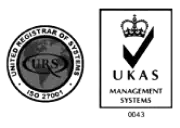Compliance risk is a critical aspect of running a business in today’s complex regulatory environment. Failure to comply with industry standards, laws, and regulations can have severe consequences, including financial penalties and reputational damage. Whether it’s a small business or a large enterprise, all organizations are exposed to compliance risk.
To effectively manage compliance risk, businesses must have a thorough understanding of the regulatory requirements that apply to their operations. This involves identifying all applicable laws, regulations, and standards and implementing controls and procedures to ensure compliance. It is also crucial to stay updated with changes in the regulatory landscape to adapt and adjust compliance efforts accordingly.
One of the key elements of managing compliance risk is conducting regular risk assessments. These assessments help businesses identify and prioritize potential risks, evaluate their impact and likelihood of occurrence, and develop strategies to mitigate them. By proactively assessing and managing compliance risks, organizations can minimize the chances of non-compliance and protect themselves from the financial and reputational consequences that come with it.
Technology can also play a significant role in compliance risk management. Compliance management software can make following rules easier. It can help with checking risks, keep an eye on how well we’re following rules, and give us updates as things happen. Using data analysis can also help us learn useful things and spot trends, so we can make smart choices and make our rule-following plans better.
This blog will talk about managing risks related to following rules. We’ll look at different kinds of risks, talk about ways to handle them well, and see how technology helps. We’ll also share tips for making sure these risks are managed properly and talk about how various industries deal with following rules. Let’s get started!
What is Compliance Risk?

Compliance risk refers to the potential for violations of laws, regulations, or company policies that could lead to legal penalties or financial loss. Understanding and managing compliance risks are crucial for businesses to maintain integrity and avoid negative consequences.
Compliance risk encompasses the potential for organizations or individuals to breach laws, regulations, policies, or ethical standards governing their operations. It arises from the failure to adhere to legal and regulatory requirements, internal policies, or contractual obligations.
This risk can manifest in various forms, including legal penalties, reputational damage, and financial losses. Effective compliance risk management involves implementing robust systems and processes to ensure adherence to applicable laws, regulations, and standards. This includes conducting regular compliance audits, developing and enforcing policies and procedures, providing employee training, and staying informed about changes in regulations. Organizations can mitigate compliance risk and safeguard their reputation and long-term viability by prioritizing compliance and fostering a culture of ethical behavior.
Related Article: Why Software For Compliance Management?
Compliance Risk in the Business Context

Compliance risk in business means the problems a company could have if it doesn’t follow the rules set by laws, regulations, and standards for its industry. These rules can be different depending on what the company does and the laws in the place where it operates.
Compliance risk happens when a company doesn’t match its ways of doing business with the rules and laws it’s supposed to follow. If they don’t follow these rules, they could get fined, sued, lose their good reputation, and customers might not trust them anymore.
Compliance risk is not limited to specific industries or sectors. It exists in all areas of business and can impact organizations of all sizes. Businesses, no matter their size, need to understand how important it is to manage compliance risks. They should take steps to make sure they’re following all the rules and regulations that apply to them.
To make sure they’re following the rules, companies need a solid plan that covers everything from rules to processes and checks. This plan needs to be backed by top bosses and become a natural part of how the company operates, so everyone knows how to do the right thing and is responsible for it.
Related Article: Top 10 Contract Management Best Practices In 2024
The Importance of Recognizing Compliance Risk in Early Stage

Recognizing compliance risk early is crucial for businesses to avoid potential consequences and mitigate the impact of non-compliance. Doing regular risk assessments helps organizations find and understand possible rule-breaking risks. They check how likely these risks are and how bad they could be if they happen. Then, they figure out ways to deal with and lessen these risks.
Early recognition of compliance risk enables organizations to take proactive measures to address non-compliance issues before they escalate. By identifying and addressing potential risks early on, businesses can prevent reputational damage, financial losses, and legal repercussions associated with non-compliance.
Reputational damage is one of the key risks organizations face when they fail to comply with industry standards, laws, and regulations. Non-compliance can lead to negative publicity, loss of customer trust, and damage to the organization’s brand reputation. The financial impact of non-compliance can be significant, including fines, penalties, legal fees, and loss of revenue.
By spotting compliance risks early and using good strategies to manage them, businesses can keep their good name, reduce money losses, and make sure they follow the rules properly.
Related Article: Cons Of Non Compliance
Types of Compliance Risks

There are several types of compliance risks that businesses may face. These risks can vary depending on the industry, regulatory environment, and specific compliance requirements. Understanding the different types of compliance risks is crucial for organizations to effectively manage and mitigate potential risks.
There are a few types of risks organizations need to watch out for when it comes to following the rules. One is about following the laws and regulations that affect businesses, and another is about how day-to-day operations might affect following those rules.
For example, let’s say a company has to follow certain safety rules for its products. They have to make sure their products are safe for people to use. But if they’re not careful in how they make or sell those products, they might accidentally break those safety rules.
Regulatory and Legal Risks Facing Businesses
Regulatory and legal risks are a common type of compliance risk that businesses face. These risks arise from the need to comply with industry-specific regulations, laws, and standards. Failure to comply with these requirements can result in legal penalties, fines, and legal action against the organization.
Regulatory and legal risks can vary depending on the industry and the applicable laws and regulations. Organizations must stay updated with the regulatory environment and ensure their operations are in line with the relevant industry standards and legal requirements.
Businesses need to follow rules set by the government and other organizations that apply to their industry. This helps them stay legal and keep the trust of customers and others who care about their business. To do this, they should create ways to make sure they’re following the rules and check regularly to make sure they’re doing things right and not breaking any laws.
Operational Risks and Their Impact on Compliance
Operational risks can have a significant impact on compliance efforts. These risks arise from the day-to-day operations of a business and can stem from internal policies, business processes, and human error.
Operational risks can impact compliance by causing weaknesses and holes in the organization’s systems and processes. For instance, if company rules aren’t clearly shared or followed, employees might unintentionally break rules, putting the organization at risk of non-compliance.
To mitigate operational risks and ensure compliance, organizations should establish robust internal policies and procedures that align with industry standards and regulatory requirements. Regular training and awareness programs can help employees understand their responsibilities and the importance of compliance in their day-to-day work.
Related Article: How To Manage Contract Risk: A Comprehensive Guide
What is Compliance Risk Management?

Compliance risk management is like making sure a company follows all the rules and regulations that apply to it. This means figuring out what could go wrong, how bad it could be if it does, and what to do about it.
Managing compliance risk means creating plans and steps to reduce the chances of breaking rules. It’s like ensuring everyone in a team understands their role in following and ensuring those rules are followed. So, it’s about making sure everyone knows what they need to do to play by the rules and avoid any trouble.
What is the Need for Managing Compliance Risk?
Managing compliance risk is crucial for businesses to avoid financial penalties, reputational damage, and legal issues. Non-compliance can result in significant consequences that can impact the organization’s financial stability, brand reputation, and legal standing. Effective compliance risk management ensures that businesses operate following industry standards, laws, and regulations, minimizing the potential negative impact of non-compliance.
Understanding the need to manage compliance risk is crucial for businesses to avoid financial penalties, reputational damage, and legal issues. Proactive risk management ensures regulatory compliance, builds trust with stakeholders, and safeguards business sustainability.
Related Article: What Is Contractual Risk? Your Ultimate Guide
Strategies for Effective Compliance Risk Management

Developing a Comprehensive Compliance Program
Developing a comprehensive compliance program is a key strategy for effective compliance risk management. A compliance program means having rules, ways of doing things, and checks in place to make sure the organization follows the right laws, rules, and standards.
A comprehensive compliance program should be supported by senior management and embedded in the organization’s culture. It should include clear policies and procedures, regular training and awareness programs, and mechanisms for monitoring and enforcing compliance.
To make sure you’re following all the rules, it’s important to first check out the laws and regulations that apply to your business. Then, figure out what things might cause problems, and create a plan that fits your company’s needs to handle those risks. Regular audits and reviews can help ensure the program remains effective and up-to-date.
When organizations create and put into action a full plan for following rules, they build a good base for handling risks related to following rules. This helps make sure everyone in the organization follows the rules properly.
Implementing Risk Assessment Procedures
Implementing risk assessment procedures is another important strategy for effective compliance risk management. Risk assessments involve identifying and evaluating potential compliance risks, assessing their likelihood and potential impact, and developing strategies to manage and mitigate these risks.
A risk management strategy should include conducting regular compliance risk assessments to identify and prioritize potential risks. These assessments look at how things are done inside the organization, like processes, controls, and procedures. They also consider outside factors, such as industry rules and legal requirements.
Risk assessments should be conducted by qualified professionals and follow established methodologies. We need to use the assessment results to figure out how to deal with risks, like making plans to reduce the chances of them happening and lessen their impact.
Related Article: Contract Compliance: Importance & Best Practices
The Role of Technology in Managing Compliance Risks

Leveraging Compliance Software Solutions
Compliance software solutions can simplify and streamline compliance management processes. These solutions provide a centralized platform for managing compliance-related tasks, documentation, and reporting.
Compliance management software can automate various compliance activities, such as risk assessments, policy management, and incident tracking. It can also provide real-time monitoring of compliance efforts and help organizations stay updated with changes in regulatory requirements.
Data security is a critical aspect of compliance risk management, and compliance software solutions often prioritize data security measures to protect sensitive information. Artificial intelligence (AI) capabilities in compliance software can enhance risk analysis and identification by leveraging data analytics and machine learning algorithms.
By leveraging compliance software solutions, organizations can effectively manage compliance risks, improve efficiency in compliance processes, and enhance data security measures.
The Benefits of Automation in Compliance Monitoring
Automation can bring significant benefits to compliance monitoring efforts. By automating compliance processes, organizations can reduce manual effort, improve accuracy, and enhance the efficiency of compliance monitoring activities.
Automation enables real-time monitoring of compliance efforts, allowing organizations to identify and address compliance issues promptly. It can provide alerts and notifications when deviations from compliance requirements occur, enabling swift corrective actions.
Automation can make compliance reporting easier by creating automatic reports and dashboards. These show the status of compliance and point out areas needing attention.
In general, using automation for compliance monitoring helps organizations stay ahead in managing compliance risks, gives a clearer view of compliance efforts, and ensures quick responses to possible compliance problems.
Related Article: How IT Companies can benefit from CLM
FAQs
What Are the First Steps in Establishing a Compliance Risk Management Program?
To start a compliance risk management program, businesses need to do a few things. They should first figure out which rules they need to follow.
Then, they should look for any possible risks. It’s important to get approval from top management for this. Finally, they need to set up a compliance plan that fits what the business needs and what the rules say.
How Often Should Compliance Risk Assessments Be Conducted?
Businesses should regularly check for compliance risks to make sure they keep following the rules. How often they do this can depend on what industry they’re in and what rules they have to follow. But usually, it’s a good idea to do these checks at least once a year or whenever big changes happen with the rules. Regular assessments help identify potential risks, evaluate their impact, and determine the residual risk that remains after implementing controls and mitigation strategies.
What are some common compliance risks that businesses may face?
Businesses might deal with a few common types of compliance risks. Mistakes, rule changes, or not meeting specific requirements can create compliance risks. For example, when private information is leaked or hacked, safety rules are ignored at work, or products don’t meet quality standards. For instance, some examples of compliance risks are when private information gets leaked or hacked, when workplace safety rules are broken, or when products don’t meet quality standards.
What are the consequences of failing to address compliance risks in a business?
Not dealing with compliance risks in a business can cause a lot of problems. This includes getting fined, losing money, harming your reputation, and facing even more compliance issues. Breaking the rules can make you pay money, go to court, lose customers’ trust, and damage your business reputation. This could make it harder for the business to do well over time.
Conclusion
In summary, businesses must understand and handle compliance risks well. This means being aware of and dealing with regulatory, legal, and operational risks before they become problems. By doing this, companies can protect their reputation and money.
Companies can do a few things to handle compliance risks well, like making good compliance programs, using technology, and encouraging everyone to improve. It’s not just something they have to do—it’s really important for their success in today’s complicated business world. So, it’s smart to keep learning, follow the rules, and stay ahead of any possible issues to keep doing well in the long run.





